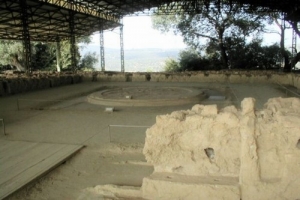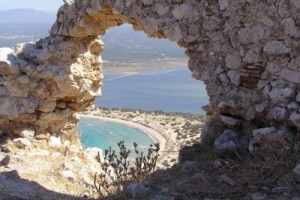Ancient Messini
- Published in Peloponnese Attractions
Ancient Messini (Mavromati) is 30km to the north of Kalamata on the site where the fortified ancient Messini was found. It is amphitheatrically built on the foothills of mount Ithomi. The vegetation one comes across includes olive trees, vines, gardens, orchards, figs, bushes, and prickly pears. A path from Mavrommati will lead you to the top of mount Ithomi.






